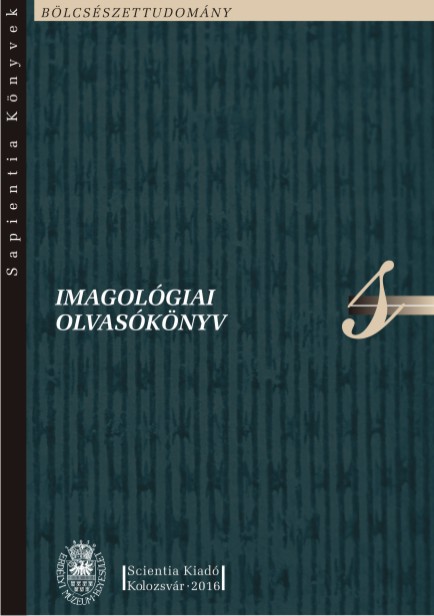
We kindly inform you that, as long as the subject affiliation of our 300.000+ articles is in progress, you might get unsufficient or no results on your third level or second level search. In this case, please broaden your search criteria.

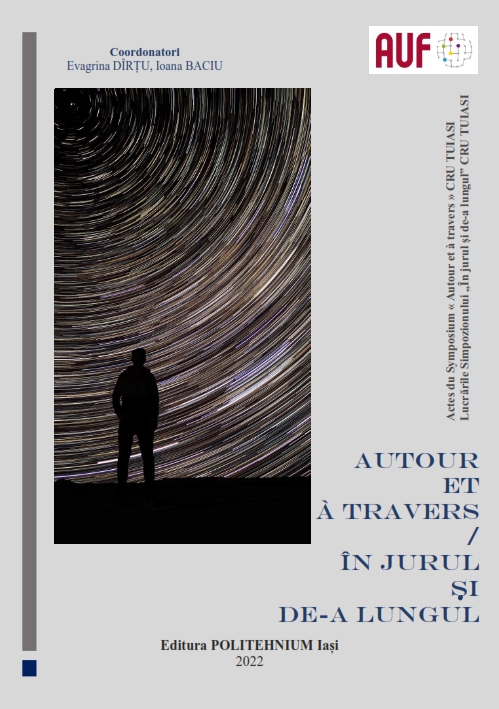
What does the hairy ball theorem have in common with one of the most famous French poets of all time? Going around Charles Baudelaire’s words, can one come across topology? And working around the idea of infinity, can one come across the transdisciplinary embrace of both metaphors and functions? From literary tropes to fixed points, from Baudelaire to Brouwer, and from the concrete to the abstract, this paper sets out to playfully explore the invisible lines uniting together, around and across, the power of poetics and the beauty of mathematics.
More...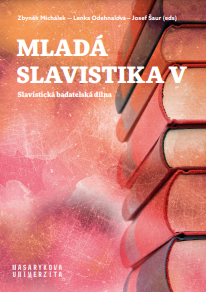
The desire for freedom is typical of the period of Romanticism; even the nations that were in the thrall of other countries started to develop their own national literatures, which were flourishing. Romanticists and their interest in the Balkans and the Orient marked the principal period when a connection between Serbian and Finnish literatures was formed. The two seemed to be totally different at first; however, there are many shared elements and influences especially in the area of Romantic literature. Serbian Folk Songs written by Vuk Stefanović Karadžić was translated to German and German men of letters were captivated; they brought the songs to the attention of Swede Johann Ludwig Runeberg, the Finnish national revivalist. Recognition of the Serbian epic was a sentiment shared across the Finnish-Swedish intelligentsia. Elias Lönnrot took charge of the idea to prepare a similar Finnish epic consisting of folk songs. The collection of folk songs and the creation of national epics drew the attention of the European intelligentsia of the period to small European nations, and these areas became a source of interest. Both epic works were studied by Czech scholar and translator Josef Holeček.
More...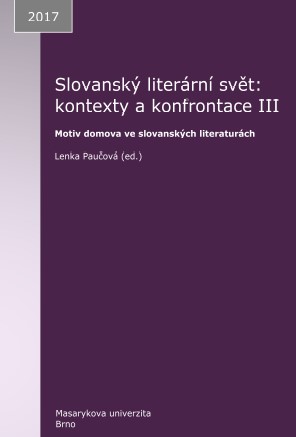
The present paper focuses on the relation between home and nature motifs in Slovak poetry. The motif of home was traditionally connected with nature, country and native village. However, the conventional opposition between nature and culture is being revaluated in the contemporary poetry. Several passages of the poetic texts prove the thesis about a period of so-called post-modern Romanticism characterized by escape from the nature, but anguishing poetic reactions on the social situation are symptoms of de-naturalization in the ambient of modern urban home. The de-naturalization, it means the loss of interaction with the home in nature, seems to be a part of a deeper process of identity crisis. De-humanization linked with de-naturalization is projected onto the creation of lyrical subject and issues into the usage of herbal and animal elements with unusual functions.
More...
The paper focuses on themes, such as illegal Ukrainian workers or different national stereotypes, in literary production of a contemporary Ukrainian writer Natalka Sniadanko. For this work were chosen two of her novels—the debut A Collection of Passions and Misadventures of a Young Ukrainian Lady (2001) and Frau Müller Will Not Pay More (2013). In her fiction Sniadanko tends to reflect life experience of Ukrainian women who have left their homeland in search of a better life and future. The author also shows different national mentality, issues of women’s emancipation and Eastern European guest workers, so called “gastarbeiters”. The aim of the paper is to prove, based on theme analysis, Sniadanko’s literary work is not just so-called “chick lit”, but it also stands a chance as a product of highbrow literature.
More...
The present paper deals with Kateřina Tučková’s literary work, concretely with the novels The Expulsion of Gerta (Vyhnání Gerty Schnirch), The Goddesses of Žítková (Žítkovské bohyně) in terms of family memory, relationship decline, narration of personal and family history, confirmation and reproduction of family myths (both presumed and real) and in terms of destructive influence of historical events on families and individuals. The attention is paid to (non-)functional communication, honesty (or alienation) and to (non-)dealing with set up life roles and strategies. Methodologically, this paper is based on studies by M. Castells (Power of Identity), A. Giddens (The Transformation of Intimacy: Love and Eroticism in Modern Societies) and J. Derdowska (Oscillating Mosaic: Urban Space and Literary Work) which can be used for anthropology of literature.
More...
In this paper I will deal with the area of a city in writing of the Slovak nadrealist poets. City played an important role in writing of the French and Czech surrealists and this pattern is repeated also with Slovak writers. Poems Srdce Bratislavy I and II by M. M. Dedinský and Neskutočné mesto by Vladimír Reisel represent the most striking example. Beside them, regarding the motif of home, the area of Bratislava becomes important for the nadrealists mainly as a shelter during a war situation. In accordance with the cosmopolite perception of area, which is a part of nadrealist poetics, home is not considered to be a concrete place, more preferably to be a symbol of something worth protecting from a war conflict and its destructive consequences. In addition to the area of a city and home, the paper will deal with the motif of wandering, the character of a passenger or wanderer and their specific depiction in comparison to Czech and French surrealist writing.
More...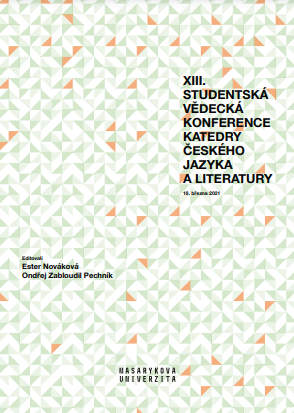
V příspěvku se zabýváme použitím motivu iniciační cesty ve dvou uměleckých dílech ze současné české a ruské literatury. K analýze byla vybrána díla Cesty na Sibiř (2008) Martina Ryšavého a Vánice (2011) Vladimira Sorokina. Cílem příspěvku je analyzovat kompoziční výstavbu literárních děl, kdy v rámci prozkoumání možností využití motivu iniciační cesty bude zvláštní pozornost věnována narativním technikám, kategorii času a prostoru, interním subjektům a vedlejším motivům.
More...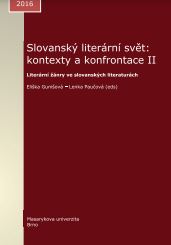
In the present study we focus on the concept of the historical novel from the point of view of its poetics in two selected works from British and Czech literature. We deal with this genre type in the context of two perspectives: literary morphology and research of surroundings in these two texts. The main point of the study is an analysis, on one side, of the historical novel as the first work and, on the other hand, already famous historical novel in the true sense of the word. The research is based on a comparison of both texts and partially on the genre methodology. The relevant part is the concept of narrative strategy of the work from the aspect of the author. Another significant component is also depicting of the atmosphere and the capturing of the contemporary moment. A part of the article deals with a historiosophical element.
More...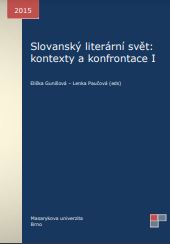
Symbolism, as part of the Modernism movement that tends to separate itself from the present for the sake of the future, seeks to renovate the culture by going to back the roots. Interestingly, members of the Symbolist Movement in both Russia and Italy expressed great interest in ancient social history and personal biography texts. In their cultural models, which I propose to call regressive, symbolists viewed early periods in history and their culture as the most authentic, sincere and unique. These models can be classified in the following way: regressive (infantile) models of the creative genius nature (Il Fanciullino by Pascoli and Kotik Letaev by Andrei Bely) and regressive models of theater that transforms into the ancient mystery (Vyacheslav Ivanov).
More...
This paper compares three of them, a novella by M. Gorky, and Crime and Punishment, a novel by F. M. Dostoevsky, on several levels: similarities and differences between main characters and their fates and secondary characters and their relationship to the main ones. Two crimes that take place in the texts are analyzed in detail. The motives, the act of the crime itself and its consequences are examined. It is hoped that this detailed analysis proves the existence of a typological and genetic relationship between literary works of F. M. Dostoyevsky and M. Gorky.
More...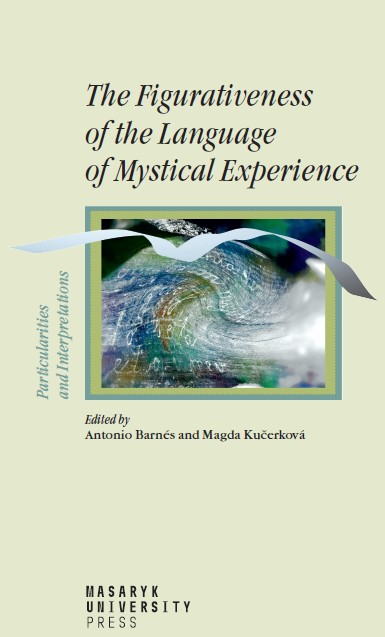
In this paper, I focus on imagination in 14th century English mysticism and modern approaches of Richard Rolle’s, Walter Hilton’s, and the unknown author of the Cloud of Unknowing’s concept of imagination. There are several inconsistencies within contemporary approaches to the imagination, affectivity, and bodily metaphors, implying a contradictory appreciation of the three English authors. In this paper, I will discuss criticism of imagination in the mysticism of these three English authors. Moreover, some possible responses will be highlighted.
More...
Mysticism and poetry make up an inseparable pairing and, in these times of absence, they reveal the deep desire of man to go beyond the immediate, the existential, the superficial. The Argentine poet Hugo Mujica opens, from his poetic saying, a door towards the abyss and the desert, towards the limit of language and silence. We can glimpse in his poetry Heidegger’s legacy and, together with the philosopher, the Master Eckhart is also dragged from his going to God without god. From the interdisciplinary dialogue between philosophy, theology and poetry, we will approach to decipher this influence that transforms the saying of the poet-philosopher and updates his word in the desert and plunges us into the mystery of the unspeakable.
More...
The article deals with the issue of silence in the thinking and work of the contemporary French author Sylvie Germain. The starting point for deliberation is the author’s essay Acte de silence (2011), in which silence is conceived both as a manifestation of God’s discreet appearance and as an act of humility and patience of man. The presence of silence seems to be a necessary condition for mystical experience. Silence understood in this way is the subject of the analysis in a selected passage from Germain’s novel L’Enfant Méduse (1991), which suggests some specific features of the author’s poetics of the transcendent, also present in her later novel work.
More...
Because of the Holocaust, World War II is the focal point for capturing spiritual experience in the 20th-century literature. How did the transformation of French spiritual literature from the poet Marie Noël in the 1st half of the century to the novelist Sylvie Germain at its end come about? Using examples from their work, this paper shows both authors’ sources of inspiration and highlights the means of expressing spirituality of a person going through an inner struggle. Although the authors describe a dark night, both of them they have a desire to overcome it, to reconcile with God, with the world and with themselves.
More...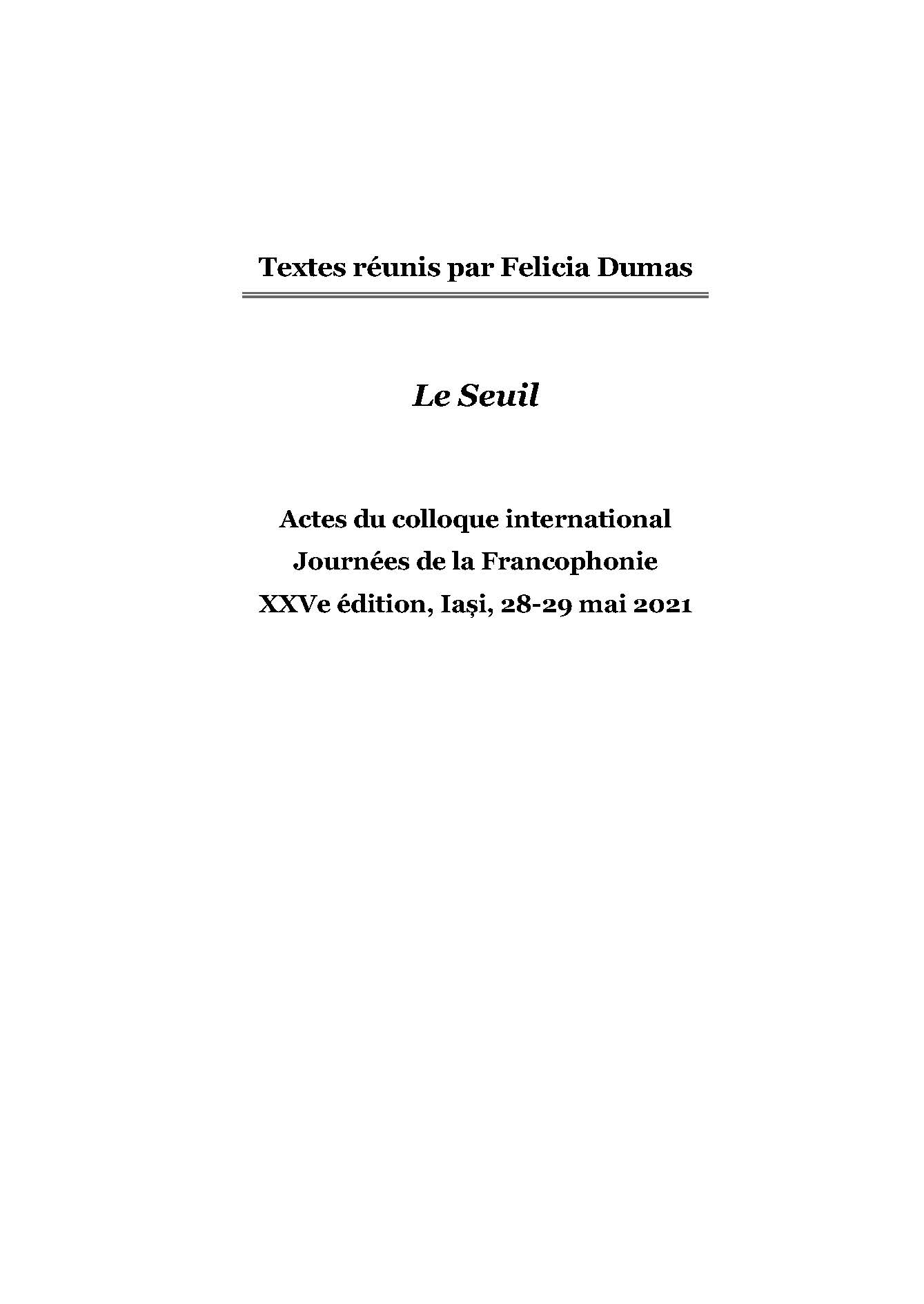
The desire to defy the forbidden is an essential element of the tale; Propp includes it in the initial situation of his narrative scheme. This space of transgression, specific to the tale, I propose to explore through the patterns of the door, the window, the partition, the passage. Along with the timeless, which is the register of all tales, I also examine the effect of the march of time on the message communicated by this type of story. A corpus of a dozen tales, from different backgrounds, will serve as the basis for my study.
More...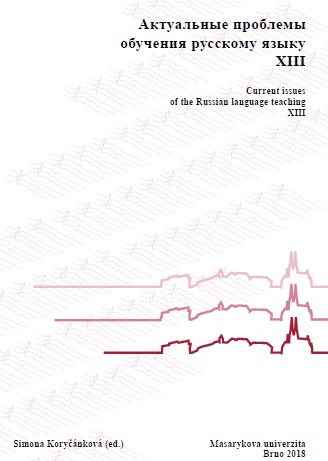
The White émigrés writers were concerned with mission to conserve the national culture saw a tragedy of their generation in being isolated from their native land. One of the ways to arrange their Dasein was a Nativist idea of redemption through being closer to land. Mikhail Osorgin and Nina Berberova pertained to different generations of the émigré writers and gave their own variants of the in his cycles of short stories titled Memoirs from a Vegetable Garden and Dweller’s Letters, included in Incidents in the Green World collection (1938), and in his novella A Free Mason (1937), Osorgin, creates his ontological utopia of living in a small cabin. Moreover, he implements it in a life-as-a-work-of-art approach, by moving to a real cabin in Sainte-Geneviève-des-Bois, near Paris and tending to his vegetable plot and garden together with his wife. Existence of both the author and his character, Yegor Tetekhin, comply with the masonic ideal: an eccentric gardener and bibliophile arranges his spiritual existence close to nature, a “cultural home” as an alternative to foreign and destructive forces of civilization. Nina Berberova’s novel The Last Ones and the First Ones (1929), addresses life of ordinary Russians in France, their arrangements for the here-and-now life on land as an opposition to a utopia of return to Russia. The author creates her own myth of saving the unnoticed generation of the Russian emigration and then follows it herself: she moves to the countryside and starts a farmstead. Similarly, Berberova’s characters save themselves from meaninglessness of existence by absorbing themselves in collective agricultural work somewhere in Provence. Family values and domestication of alien space allow the émigrés to gain “aerial roots”, which the author understands in a spiritual way: keeping distinctive internal national identity will allow reconstructing their cultural motherland in the alien land.
More...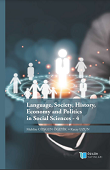
Gençlik-yazınsal eserlerde birçok alan ve konuların yanı sıra asıl ağırlık konusu ergen kişinin kendi ergenlik dünyası, bunalımları ve bu süreçte yaşadığı çatışma, çelişki ve ikilemlerdir. Tüm bunlar roman türleri içinde polisiye, macera, fantastik, sorun odaklı vb. içinde belli bir takım olay kurguları etrafında yer alır ama başkahraman olan ergen kişinin dünyası içinde metinleştirilir.
More...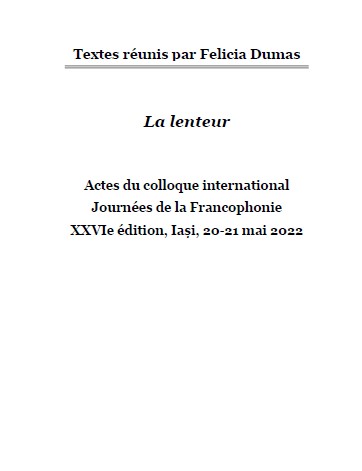
This article focuses on the slow procedure of self-reconstruction in George Simenon’s Les Anneaux de Bicêtre (1963) and Jorge Semprun’s L’Évanouissement (1967). In the first novel, René Maugras, a famous fifty-four year old newspaper editor, suffers a stroke; in the second one, Manuel, a twenty-one year old Spanish resistant fighter living in Paris loses consciousness and falls off a train, while at the same time sustains a serious ear injury. In the cases of both protagonists, with respect to the stages of each’s recovery, there seem to be similarities. First, the two respective protagonists regain consciousness through acute sensory awareness of their surroundings. Next, as they need to make time pass during their recuperation period, they try to keep their minds continually preoccupied. Naturally, one of their first thoughts is meditation on their own death or on the concept of death in general. Besides, they reflect on their lives and examine their conscience. Certain revelations about themselves will lead to feelings of guilt and shame. Therefore, it could be inferred that a sudden turn of events, such as an illness or an accident, may slow down the fast-paced routine and make somebody realize through this experience what the true values of life are.
More...
The two latest novels signed by Patrick Modiano, published în 2019 and 2021 - Encre sympathique and Chevreuse – are built around well-known themes and obsessions of the author: memory/forgetfulness; identity search; teenagers running away, as they don’t have support in life; writing; the photographic art; long flâneries in the urban space, either Parisian or Roman. In these two cases as well, the author uses the thriller formula, which is in fact a pretext which opens the narration. Our aim is to point out how much memory (which is often slow and imperfect) is important in the work of the winner of the Nobel Prize (2014). We also intend to show the way in which, in a very specific manner, writing is connected to identity search (both linguistic and cultural).
More...